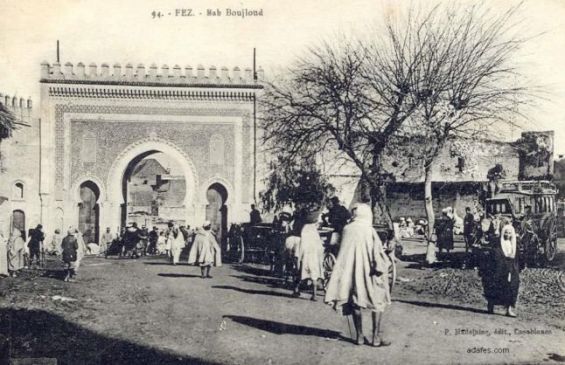Lalla Batoul is Morocco’s first female political prisoner. Her atrocious account rose to fame in 1910, when she was arrested alongside her husband, one of the most powerful men in Fez.
Lalla Batoul’s arrest, however, was a political one that involved the sultan, the Pasha and European powers. Lalla Batoul was the wife of governor of Fez al Hajj Benaissa. But she was more than just the wife of a stateman. This aristocratic woman was described as one who combined, beauty, prestige and intelligence.
Reports suggest that Lalla Batoul was a «powerful woman who defied the domestic cloistering of women». Indeed, the lady was skilled in several foreign languages, had important European women as friends and invested her own money.
A powerful woman
All these unconventional traits brought Lalla Batoul a sort of attention no one would have asked for. Being the wife of the Pasha, a close figure to deposed sultan Abdelaziz, Lalla Batoul was arrested and tortured. «After Abdelhafid overthrew his brother King Abdelaziz, he launched a witch-hunt campaign against the aides of his brother among whom was Benaissa», Brahim el-Guabli wrote in an article entitled «From Lalla el-Batoul to Oum Hamza: Moroccan Women’s On-going Fight for Equality and Dignity».
The arrest of Benaissa and his wife was followed by the «confiscation of their wealth», torture and harassment. But Batoul’s arrest and tortute was interpreted differently by scholars. Quoting diplomatic documents, el-Guabli wrote that «her torture and ultimate jail in the harem of the Sultan was equally the result of her modernity, which annoyed the powers that be at the time, as it was the result of her husband’s affiliation with King Abdelaziz».
Meanwhile, historians Rachel G. Fuchs and Anne Epstein reported in their book «Gender and Citizenship in Historical and Transnational Perspective: Agency, Space, Borders» (Macmillan International Higher Education, Nov 18, 2016) that «the sultan wanted to break Batoul’s will without killing her, not only for obtaining desired information but also to remind her specifically of the submissive role required of women in the harem zone».
Tortured by the sultan
And so it was. Lalla Batoul was brought to a palace cell in Fez and tortured before the sultan’s eyes. «Batoul was crucified and an iron bar was used to poke her breasts as she was hanging naked from the wall of a cell inside the monarch’s palace in Fez», wrote el-Guabli, adding : «Worse, Batoul was tortured in the presence of the Sultan».
Due to her previous connections and friendships, Batoul managed to bring her story to light. Her dramatic story, arrest and torture appeared in international newspapers, including the French Le Temps and The Times. This «caused a huge embarrassment to the sultan Moulay Abdelhafid», Fuchs and Epstein recalled.
 Moulay Abdelhafid. / DR
Moulay Abdelhafid. / DR
Further mobilization helped the jailed woman. According to the two historians, a letter from a representative of France in Tangier dated 27 June 1910 to the French Minister of Foreign Affairs exposed the violence against Lalla Batoul.
«Our Consul in Fez had the opportunity to ask the sultan about the news related to the torture inflicted on the wife of the former Pasha Benaissa (…) he insisted that Lalla Batoul, who is still imprisoned in Meknes, should be brought to Fez, where the wife of the doctor at our clinic could examine her. Finally the sultan consented».
In August, Batoul was indeed examined and the medical report showed that she suffered crucifixion, had a fracture of the left arm with elbow dislocation and severe shoulder sprain.
Diplomatic pressure allowed the release of Batoul who was sent to the Harem of Dar Makhzen. She was permitted to live in a private house with her mother and children in Meknes, bearing the scars of this dramatic episode until the last day of her life.





 chargement...
chargement...













